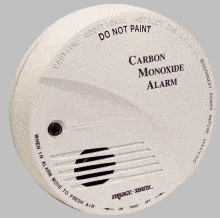Boating and swimming go hand-in-hand.
 A refreshing swim on a hot humid day is a great way to cool off, whether out on the water and diving off the bow, or simply climbing down the ladder off the platform.
A refreshing swim on a hot humid day is a great way to cool off, whether out on the water and diving off the bow, or simply climbing down the ladder off the platform.
Teak surfing is popular in some places, where kids hang on to the platform of a slow-moving boat and ride the wake. Others like to go tubing behind the boat—that is being towed in a tube on a short line behind the boat. Some just jump into the harbour and swim around close to the boat.
Great fun! Not only at the time, but also for years to come as the stories are told and retold with excitement and a little exaggeration.
But, for too many, it’s a deadly story…..
Lurking around boats is an invisible silent killer. By sharing this information, we hope you will be better prepared to prevent unfortunate preventable accidents.
What is it?
 Carbon Monoxide (CO) is an invisible, colorless, odorless, tasteless gas that is produced whenever a carbon based fuel such as gasoline, diesel, charcoal or oil burns. Sources on your boat are motors, generators and barbeques.
Carbon Monoxide (CO) is an invisible, colorless, odorless, tasteless gas that is produced whenever a carbon based fuel such as gasoline, diesel, charcoal or oil burns. Sources on your boat are motors, generators and barbeques.
Early symptoms include irritated eyes, headache, nausea, weakness and dizziness. Because these symptoms are often confused with seasickness or intoxication, you should assume it is CO poisoning until proven otherwise. It is also important to note that some people have no symptoms at all. They just silently slip into unconsciousness. So, keep an eye on each other and act quickly.
Get to fresh air and call Coast Guard for help. They will co-ordinate Emergency Services on Land and Water as required or call 911.
Why is it so Dangerous?
Carbon Monoxide can build up anywhere in or around your boat and can harm or even kill you inside or outside the boat, whether you’re underway, moored, anchored or at the dock in your harbour. You can’t see, smell or taste it, but it mixes evenly with air and enters your bloodstream through your lungs displacing the oxygen your body needs.
Prolonged exposure to low concentrations or very short exposure (only a few seconds) to high concentrations can kill you.
I have heard first hand from boaters as well as read many incidents on the internet where boaters have lost their lives due to CO Poisoning. US Coast Guard has much more information on their site and you can read about Claire Bauer-Babik who lost her brother who swam to the boat, and died in the water before he could climb aboard. You can read about Al Unser, Sr. who dove in to free the rope caught in the propeller. He was a four-time Indianapolis 500 winner who knew the dangers of CO. But this time, he nearly lost his life to CO Poisoning.
Many innocent children have lost their lives while swimming around the boat, being towed behind the boat or sitting on the platform where fumes have accumulated from a nearby motor or generator.
There are far too many stories and lives lost.
CO Poisoning is Preventable, so be aware of the danger, the signs and symptoms and what to do to prevent and treat CO Poisoning.
When Does it Accumulate?
 How often have you been sitting in your cockpit and suddenly caught a whiff of cigarette or cigar smoke, or a BBQ? When you look up to locate the source of the smell, you realize it’s coming from several boats down the dock or even the other side of the harbour. You can’t see it, but you can smell it.
How often have you been sitting in your cockpit and suddenly caught a whiff of cigarette or cigar smoke, or a BBQ? When you look up to locate the source of the smell, you realize it’s coming from several boats down the dock or even the other side of the harbour. You can’t see it, but you can smell it.
Carbon Monoxide accumulates anywhere in or around your boat. Whenever there is a motor or generator running, there is CO. The big difference is that you can’t see it or smell it, but you can safely assume it is building up somewhere depending on the air movement, superstructure, vacuum etc. and take the necessary precautions.
Where Does it Accumulate?
Relaxing on your boat in the harbour, at an anchorage or on a leisurely afternoon cruise seems harmless, but you need to be aware of the dangers of CO.
If you have a slight breeze on one side of your boat (high pressure side), there is a good chance CO is accumulating on the other side (low pressure side) in the vacuum created by the breeze and superstructure, either in the cockpit, under canvas or inside the cabin.
Your vehicle is another good example. Driving down the road on a rainy day, rain will blow off the windshield and accumulate in large droplets of rain and dirt on the back window or back bumper. The backside of a moving vehicle is a low pressure zone and that vacuum draws in the moisture, dirt and CO.

Back in the 1950’s and 1960’s, station wagons had opening back windows that drew the accumulated CO into the vehicle poisoning the occupants. This became known as the “Station Wagon Effect” or back drafting.
Whenever you see a boat running with the flag flying backwards pointing towards the cockpit, you know the station wagon effect is in play, drawing the fumes filled with CO and the flag, into the cockpit. There is a good article about this on the BoatUs.org Site with pictures.
We installed a CO monitor on our boat and were surprised to learn that it went off many times when we were just idling out of the harbour. The station wagon effect is very real, drawing fumes (and CO) into the cockpit under the canvas top. The only solution is to open the front and/or side curtains, accelerate or change direction relative to the wind. If the weather is okay, it is wise to have the forward hatch open to draw fresh air into the boat and force the fumes out the back.
We have even heard stories of people on an enclosed Flybridge, being overcome with CO fumes and the boat running ashore with 2 dead occupants on the bridge.
www.boatus.org has a great review and a story of a Michigan couple who were overcome by fumes while doing a few end-of-season projects—they did not have a CO Detector.
CO can accumulate anywhere; so, ventilate, ventilate, ventilate.
These pictures from the US Coast Guard CO Flyer show some areas where CO accumulates on boats:
 | Inadequately ventilated canvas enclosures |
 | Exhaust gas trapped in enclosed places |
 | Blocked exhaust outlets |
 | Another vessel’s exhaust |
 | “Station wagon effect” or back drafting |
 | At slow speeds, while idling |
When in an anchorage, beware of the boater who is running his generator. It too, creates CO and it can accumulate on his boat and those in the immediate area–especially when boats are rafted together or just close to each other on a calm day.
Another source of CO on board a boat is from portable cabin heaters that are brought aboard & used mainly spring & fall. If a heater uses fuel, then it produces CO. Catalytic camp-style heaters are often used indiscriminately on a boat without thinking that they should never be in an enclosed place. The same with using the boat’s portable butane or propane stove or barbecue in an enclosed place for either cooking or heating. It can so easily be done without thinking, but deserves a warning too.
We believe that every boat should have at least one Marine CO detector around the helm or cockpit area and another inside—especially in the midcabin. Fumes (with CO) can find their way into the cabin and sleeping area. A CO detector will immediately warn you of a CO buildup so you can get out of the boat—and save your life.
Most boats built after 1998 have CO Detectors installed. If your boat was built before 1998, seriously consider getting one or more Marine CO Detectors from your local marina or marine store. Domestic CO Detectors may not have “time weighted averaging” that reduces the number of alarms. This is necessary on a boat because you will have whiffs of CO on board often during the day. These detectors average the readings over a few minutes and only sound the alarm when there are repeated readings of CO. Domestic CO Detectors may go off too often which will result in them not being taken seriously.
How Do You Protect Yourself and Your Crew?
There is plenty on the internet on this subject, but the best summary I found to protect yourself and your crew is published in the US Coast Guard Flyer that is available on their website at http://www.uscgboating.org/ It says:
- Know where and how CO may accumulate in and around your boat.
- If you can smell engine exhaust, you are inhaling CO.
- Follow all warnings and instructions for canvas, engine operations, etc.
- Maintain fresh air circulation throughout the boat at all times.
- Know where your engine and generator exhaust outlets are located and keep everyone away from these areas.
- Stay off the back deck and the swim platforms while the engines are running.
- Never enter areas under swim platforms where exhaust outlets are located unless the area has been properly ventilated.
- Although CO can be present without the smell of exhaust fumes, if exhaust fumes are detected on the boat, take immediate action to ventilate these fumes.
- Treat symptoms of seasickness as possible CO poisoning. Get the person into fresh air immediately. Seek medical attention—unless you’re sure it’s not CO.
- Install and maintain marine grade approved CO detectors.
- Every alarm requires immediate action
- Replace detectors as recommended by the manufactuer
- If CO is suspected, open all hatches, windows and ports to ventilate.
- Changing course and speed to place boat heading into the wind can improve ventilation.
- Maintain your engine in accordance with manufacturers’ recommendations.
- Engines that are not tuned properly produce more CO.
- Get a Vessel Safety Check
- Boat Responsibly.
Summary
CO Poisoning is preventable.
A little is harmful—a lot is deadly!
You can’t see, taste or smell it
But it’s definitely there.
Whenever your boat is running,
CO is lurking in the air.
Know what it is and how it works.
Be prepared and know what to do.
You can prevent CO Poisoning.
Protect yourself and your crew.
Brenda Dawson
